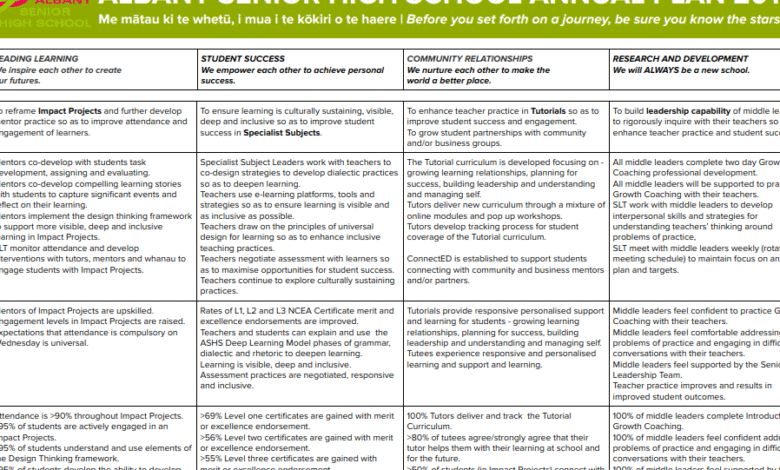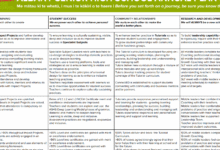Annual Learning Plan: A Simple Guide to Organizing Your Year of Learning

Annual learning plan is an important tool for anyone who wants to grow their knowledge and skills throughout the year. An annual learning plan helps you decide what to learn, when to learn it, and how to track your progress. It acts like a map that guides you through your learning journey, making sure you do not forget anything important. With a clear plan, you can focus on the topics that matter most, set achievable goals, and measure your improvement. Many people find that having an annual learning plan makes learning more fun and less stressful because it removes confusion and helps you stay on track. Whether you are a student, a professional, or someone who loves learning new things, creating an annual learning plan can make your efforts more organized and effective.
Creating an annual learning plan is not difficult if you follow some simple steps. Start by thinking about your goals for the year and what skills or knowledge you want to gain. Break your goals into smaller steps and assign each step to a specific time period, like months or weeks. This way, you can focus on one thing at a time without feeling overwhelmed. Include different learning methods such as reading, watching videos, attending courses, or practicing new skills. Make sure to track your progress and adjust your plan if needed, because learning is not always a straight path. An annual learning plan also helps you stay motivated by giving you a sense of achievement as you complete each step. Over time, this consistent effort leads to real growth and confidence in your abilities.
What is an Annual Learning Plan?
An annual learning plan is a written or digital plan that outlines your learning goals for a whole year. It includes the skills, subjects, or knowledge areas you want to improve, along with a schedule for learning them. Think of it like a calendar for your learning journey. You can include small weekly goals or monthly targets to make the plan manageable.
The plan is not just about listing topics; it also explains how you will learn them. You can include reading books, taking online courses, attending workshops, or practicing skills. An annual learning plan ensures that you stay consistent and organized, making your learning more effective.
Benefits of an Annual Learning Plan
Having an annual learning plan brings many advantages:
- Clear Goals: You know exactly what to achieve each month.
- Better Time Management: You can allocate your time for learning and avoid wasting it.
- Motivation Boost: Seeing progress keeps you motivated.
- Structured Learning: It prevents random learning and confusion.
- Self-Improvement: You gradually develop new skills and knowledge.
With these benefits, an annual learning plan becomes a powerful tool for anyone who wants to learn continuously.
How to Create Your Annual Learning Plan
Creating an annual learning plan is simple if you follow these steps:
- Set Your Goals: Decide what you want to learn this year. Focus on skills that will help you personally or professionally.
- Break Goals into Smaller Steps: Divide your main goals into monthly or weekly targets. Smaller goals are easier to achieve.
- Choose Learning Methods: Pick the best ways to learn, like books, online courses, videos, or practice.
- Create a Schedule: Assign each topic or skill to a specific month or week.
- Track Your Progress: Regularly check how much you have learned and adjust your plan if needed.
- Stay Flexible: Learning can take unexpected turns, so be ready to adapt your plan.
By following these steps, you will have a clear and practical annual learning plan that guides your learning throughout the year.
Annual Learning Plan for Students
Students can benefit greatly from an annual learning plan. It helps them manage school subjects, assignments, and extra learning activities. A student can set monthly targets for reading, projects, or practice tests. For example, if a student wants to improve math skills, the plan can include practicing specific topics every week and reviewing progress monthly.
Using an annual learning plan reduces stress during exams because the student already knows what to study and when. It also encourages good learning habits, like setting aside time each day for reading or practicing. Over time, students become more disciplined, focused, and confident in their studies.
.Annual Learning Plan for Professionals
Professionals can use an annual learning plan to grow their career skills. This may include learning new software, improving communication, or taking leadership courses. By setting clear goals and scheduling learning activities, professionals can stay competitive and improve their performance at work.
For example, a marketing professional might create an annual learning plan that includes completing an online SEO course in the first quarter, attending a social media workshop in the second quarter, and reading marketing books in the third quarter. This approach ensures continuous growth and helps professionals stay updated with industry trends.
Tools and Apps to Track Your Annual Learning Plan
Several tools and apps can help you manage your annual learning plan effectively:
- Trello or Asana: Create boards for each learning goal and track progress.
- Google Calendar: Schedule learning sessions and set reminders.
- Notion: Keep detailed notes, checklists, and learning logs.
- Habitica: Turn your learning goals into a fun habit-tracking game.
Using these tools makes your learning plan more visual and organized, helping you stay on track.
Common Mistakes to Avoid in Your Annual Learning Plan
While creating an annual learning plan, avoid these common mistakes:
- Setting Too Many Goals: Focus on a few important goals to avoid burnout.
- Not Tracking Progress: Without tracking, it’s easy to lose motivation.
- Being Too Rigid: Plans should be flexible to accommodate changes.
- Ignoring Review: Regularly review and update your plan to stay effective.
By avoiding these mistakes, your annual learning plan will be more practical and achievable.
How to Review and Improve Your Annual Learning Plan
Reviewing your plan is as important as creating it. Set aside time monthly or quarterly to check your progress. Ask yourself: Are you achieving your goals? Do you need to adjust your schedule or methods? This reflection helps you stay on track and improve your plan for better results.
Over time, reviewing your plan helps you understand your learning style and improve your productivity. You will also feel motivated seeing how much you have accomplished, which encourages you to continue learning.
Conclusion
An annual learning plan is a powerful tool to organize your learning journey and achieve your goals. It helps you stay focused, manage time, track progress, and improve skills consistently. Whether you are a student, a professional, or a lifelong learner, a clear plan makes learning more structured, enjoyable, and successful. Start creating your annual learning plan today and take control of your learning journey!
FAQs
Q1: What is an annual learning plan?
An annual learning plan is a roadmap for learning that outlines your goals, methods, and schedule for the entire year.
Q2: Who can use an annual learning plan?
Anyone who wants to learn effectively can use it—students, professionals, and lifelong learners.
Q3: How often should I review my annual learning plan?
It’s best to review monthly or quarterly to track progress and make improvements.
Q4: Can I change my annual learning plan during the year?
Yes, your plan should be flexible to adjust to new goals or unexpected changes.
Q5: What tools can help manage an annual learning plan?
Apps like Trello, Asana, Google Calendar, Notion, and Habitica are great for organizing and tracking your plan.

